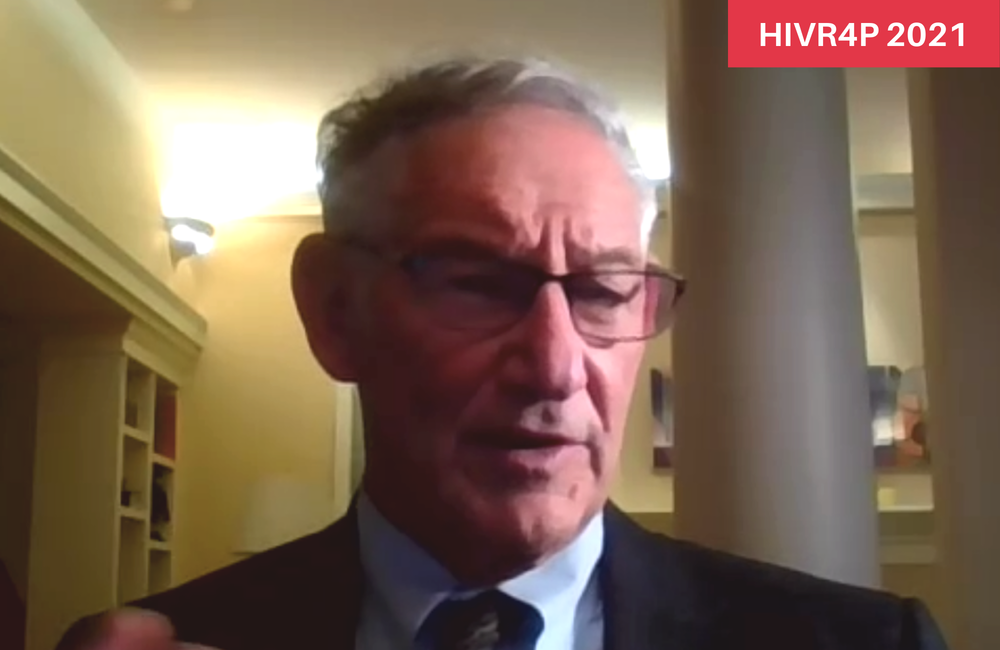
Two years ago, at the HIV Research for Prevention (HIVR4P) conference in Madrid, Professor Lynn Morris of the South African National Institute for Communicable Diseases made a prediction about the AMP (Antibody-Mediated Protection) studies. The two studies are the first large studies using infusions every two months of a so-called broadly neutralising antibody (bNAb) called VRC01 as a medication to prevent infection.
Morris said: “There is currently a lot of debate about whether one antibody will be enough to do the job.”
At the HIVR4P virtual conference yesterday – planned for Cape Town, but now happening on computer screens worldwide – that debate was answered. VRC01 was not enough to do the job. The overall reduction in HIV infections, compared to placebo, was 19%, and this reduction was some way off statistical significance, so scientifically speaking did not count as a reduction at all. This result bore out Lynn Morris’s doubts – but were more disappointing than expected.
So why were the AMP studies still hailed as a 'game changer?' The VRC01 antibody did produce a 75% reduction in the number of infections in the type of viruses that were most sensitive to this particular bNAb. As these represent less than a third of circulating viral varieties, VRC01 cannot be used as a solo prevention drug.
But, for the first time, scientists have a very precise threshold for its efficacy and know that it will contribute to prevention regimens using combinations of bNAbs – combinations that are currently undergoing trials.
Broadly neutralising antibodies are unusual antibodies that develop in a minority of people chronically infected with HIV and have features that circumvent the strategies HIV uses to shrug off the body’s natural antibody response.
The two AMP studies randomised a total of 4600 people to receive either one of two doses of VRC01 or a placebo. The HVTN 704 trial involved 2700 gay and bisexual men and transgender women in the Americas, and HVTN 703 recruited 1900 cisgender women in sub-Saharan Africa.
The potency of antibodies is measured in so-called titres, which are the concentration of antibodies in the blood that are needed to reduce the infectivity of a particular viral strain – in this case, by 80% (the so-called IC80). The higher the titre, the wider the range of viruses that are inhibited by the antibody.
At the start of the AMP trials, the researchers hoped that strains of HIV with an IC80 of less than 10 micrograms per millilitre would be neutralised by VRC01. This would represent 65 to 81% of circulating viral variants, as measured by so-called ‘panels’ of different viruses taken from patients in different parts of the world.
In the event, however, a significant difference in infections between people receiving VRC01 and ones receiving placebo was only seen in patients infected with viruses with an IC80 below 1 microgram per millilitre. This only represents the most ‘sensitive’ 30% of viral variants.
Because the proportion of sensitive viruses differed between the two studies, this meant VRC01’s efficacy differed: it prevented 26.6% of infections in the HVTN704 trial in gay men, but only 8.8% of infections in the women’s HVTN703 trial. Averaged out, the overall efficacy was 19.25%, and this was not statistically significant.
As indicated, while the AMP results were disappointing, they still represent an advance.
Principal investigator Professor Larry Corey told aidsmap.com: “We now have a marker of success for the use of bNAbs as prevention measures, and it does confirm that we will need cocktails of these antibodies, rather than individual ones, to neutralise the majority of viral isolates.
“Yes, it would be nice for VRC01 to have been more potent by itself. But it was only the first of many bNAbs to have been characterised, and we are already conducting a clinical trial using three of these antibodies. We are also looking at longer-lasting formulations of these antibodies.”
"The VRC01 antibody did produce a 75% reduction in the number of infections in the most sensitive viruses."
Up until now, finding and purifying these rare antibodies that have so much potential as components of novel HIV treatment and prevention combinations has been down to chance. Their production has been a complex business of extracting them from mixtures of antibodies – which implies expense.
Another study presented at the HIVR4P opening press conference has found a way to get the B-cells of the immune system – the ones that produce antibodies – to produce bNAbs in large amounts and of greater purity than before.
Dr Emilie Seydoux of the Fred Hutchinson Research Center in Seattle presented her team’s work on so-called ‘anti-idiotypic monoclonal antibodies’ (AI-mABs) that bind to the B-cells themselves. They can be ‘tuned’ to stimulate the proliferation of extremely specific B-cells that only produce one kind of antibody. In experiments in mice, by using a combination of two of these antibodies, they managed to induce a proliferation of VRC-01 producing B-cells. These AI-mABs could also be used as a vaccine to induce a finely tuned response to HIV.
Corey L et al. VRC01 Antibody Prevention of HIV. HIV Research for Prevention (HIVR4P) virtual conference , abstract HY01.01LB, 2021.
View the session programme on the conference website.
Update: Following the conference presentation, this study was published in a peer-reviewed journal:
Corey L et al. Two Randomized Trials of Neutralizing Antibodies to Prevent HIV-1 Acquisition. New England Journal of Medicine, 384: 1003-1014, March 2021.
DOI: 10.1056/NEJMoa2031738
Seydoux E at al. Development of a novel VRC01-class germline targeting immunogen derived from anti-idiotypic antibodies. HIV Research for Prevention (HIVR4P) virtual conference , abstract OA08.05LB, 2021.
